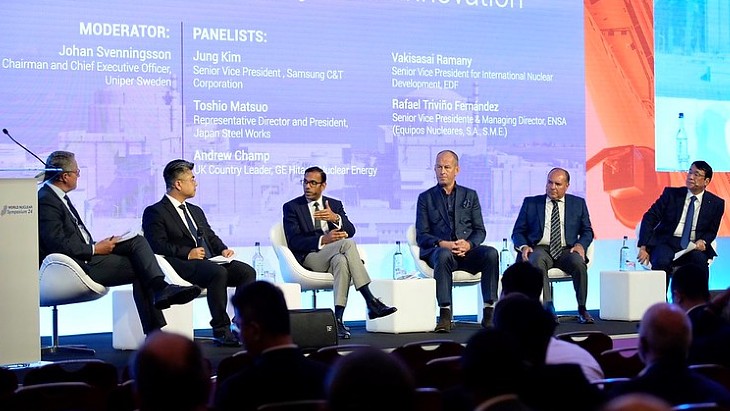The global nuclear industry faces a monumental challenge - to triple nuclear capacities by 2050. This means not only building new reactors but also ensuring we have the infrastructure, expertise, and supply chain resilience to support these projects over their entire lifecycles. The scale of this challenge cannot be overstated. It requires a coordinated global effort across industries, governments, and energy companies to align resources and capabilities to deliver on this vision.
The nuclear industry is uniquely complex, relying on specialised equipment, materials, and skills. The delivery of a nuclear project depends on everything from high-quality steel for reactor vessels to precision-engineered components for safety systems. Without robust supply chains, the risk of delays and cost overruns increases. To mitigate these risks, we must first ensure long-term visibility and confidence in the market. Governments must signal their commitment to nuclear energy with clear and consistent policies and funding mechanisms, while industries must be prepared to invest in upgrading and expanding their capabilities.
However, investment in industrial capacity requires risk-taking. For the nuclear sector to thrive, we must create a virtuous cycle where initial investments spur further confidence in the market, enabling suppliers to scale their production and expertise. It is through this boldness - investing today to ensure tomorrow's capacity - that we can build the industrial foundation necessary for nuclear's expansion.
For small modular reactors, it is crucial that we reduce construction times, equipment lead times and manufacture as many modules as possible off-site. This will require the creation of a sophisticated ecosystem, where manufacturing processes are fundamentally restructured to accommodate the modular approach. Equipment manufacturers and suppliers will have to increase their technology knowledge to ensure a strong supply chain platform able to deliver multiple designs in the coming decades. Factories will need to be equipped with advanced technology to produce these components at scale, ensuring the highest quality and safety standards. However, this transformation will not happen without significant investment in manufacturing infrastructure. To justify these investments, the industry once again requires visibility - long-term commitments from governments, clear regulatory pathways, and a consistent pipeline of projects.
In addition, fostering cooperation to harmonise regulatory objectives across borders can accelerate licensing processes, reduce duplication of efforts, technology costs, and enable the global sharing of best practices.
Europe, home to many pioneering nuclear projects, must lead by example in addressing these industrial challenges. The European nuclear supply chain is mature but not immune to pressures. As we move to build new reactors and modernise existing fleets, we need to strengthen the network of suppliers and manufacturers across the continent. This involves investing in both large-scale infrastructure projects and the smaller, highly specialised suppliers that are vital to the nuclear ecosystem.
The European nuclear sector also needs to be protected. Level playing field rules are essential for the long-term survival of the European supply chain. Without such safeguards, the risk of unfair competition could erode the stability and capabilities that are critical to sustaining industrial readiness. Ensuring that European suppliers can compete on an equal footing will protect the integrity of the nuclear ecosystem and foster a sustainable industrial base capable of supporting future projects.
To sustain the necessary scale, we need to cultivate the next generation of nuclear engineers, technicians, and workers. Europe’s educational institutions, alongside industry players, must ramp up training programmes to ensure that we have the skilled workforce to build, operate, and maintain the future fleet of nuclear reactors. For the nuclear industry to succeed on a global scale, confidence in the market is paramount.
We must move away from the boom-and-bust cycles that have historically plagued nuclear projects. By maintaining a steady pipeline of projects and providing clear market signals, we can give suppliers and manufacturers the certainty they need to invest in their own capabilities. Our sector stands at a critical juncture. The pathway to a low-carbon future requires a bold commitment to nuclear energy, but that commitment must be backed by real, tangible action in industrial capacity and supply chain readiness.






_53514_33880.jpg)





